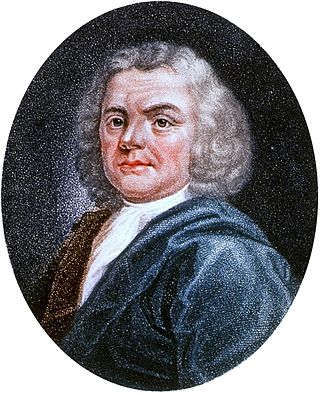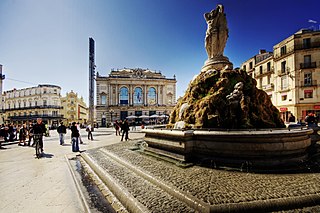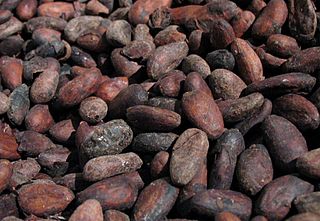
Herman Boerhaave was a Dutch botanist, chemist, Christian humanist, and physician of European fame. He is regarded as the founder of clinical teaching and of the modern academic hospital and is sometimes referred to as "the father of physiology," along with Venetian physician Santorio Santorio (1561–1636). Boerhaave introduced the quantitative approach into medicine, along with his pupil Albrecht von Haller (1708–1777) and is best known for demonstrating the relation of symptoms to lesions. He was the first to isolate the chemical urea from urine. He was the first physician to put thermometer measurements to clinical practice. His motto was Simplex sigillum veri: 'Simplicity is the sign of the truth'. He is often hailed as the "Dutch Hippocrates".

Prospero Alpini was a Venetian physician and botanist. He travelled around Egypt and served as the fourth prefect in charge of the botanical garden of Padua. He wrote several botanical treatises which covered exotic plants of economic and medicinal value. His description of coffee and banana plants are considered the oldest in European literature. The ginger-family genus Alpinia was named in his honour by Carolus Linnaeus.

Montpellier is a city in southern France near the Mediterranean Sea. One of the largest urban centres in the region of Occitania, Montpellier is the prefecture of the department of Hérault. At the 2020 census, 299,096 people lived in the city proper, while its metropolitan area had a population of 813,272. The inhabitants are called Montpelliérains.

Gerrit Janszoon Vos, often known by his Latin name Gerardus Vossius, was a Dutch classical scholar and theologian.
The 1711 Sales Auction Catalogue of the Library of Sir Thomas Browne highlights the erudition of the physician, philosopher and encyclopedist, Sir Thomas Browne (1605-1682). It also illustrates the proliferation, distribution and availability of books printed throughout 17th century Europe which were purchased by the intelligentsia, aristocracy, priestly, physician or educated merchant-class.

The horned screamer is a member of a small family of birds, the Anhimidae, which occurs in wetlands of tropical South America. There are three screamer species, the other two being the southern screamer and the northern screamer in the genus Chauna. They are related to the ducks, geese and swans, which are in the family Anatidae, but have bills looking more like those of game birds.

Felix Fabri was a Swiss Dominican theologian. He left vivid and detailed descriptions of his pilgrimages to Palestine and also in 1489 authored a book on the history of Swabia, entitled Historia Suevorum.

The anis are the three species of birds in the genus Crotophaga of the cuckoo family. They are essentially tropical New World birds, although the range of two species just reaches the United States.

Pseudo-Apuleius is the name given in modern scholarship to the author of a 4th-century herbal known as Pseudo-Apuleius Herbarius or Herbarium Apuleii Platonici. The author of the text apparently wished readers to think that it was by Apuleius of Madaura (124–170 CE), the Roman poet and philosopher, but modern scholars do not believe this attribution. Little or nothing else is known of Pseudo-Apuleius apart from this.

Chocolate liqueur is a chocolate flavored liqueur made from a base liquor of whisky or vodka. Unlike chocolate liquor, chocolate liqueur contains alcohol. Chocolate liqueur is often used as an ingredient in mixology, baking, and cooking.

Pieter van Musschenbroek was a Dutch scientist. He was a professor in Duisburg, Utrecht, and Leiden, where he held positions in mathematics, philosophy, medicine, and astronomy. He is credited with the invention of the first capacitor in 1746: the Leyden jar. He performed pioneering work on the buckling of compressed struts. Musschenbroek was also one of the first scientists (1729) to provide detailed descriptions of testing machines for tension, compression, and flexure testing. An early example of a problem in dynamic plasticity was described in the 1739 paper.

De agri cultura, written by Cato the Elder, is the oldest surviving work of Latin prose. Alexander Hugh McDonald, in his article for the Oxford Classical Dictionary, dated this essay's composition to about 160 BC and noted that "for all of its lack of form, its details of old custom and superstition, and its archaic tone, it was an up-to-date directed from his own knowledge and experience to the new capitalistic farming." Cato was revered by many later authors for his practical attitudes, his natural stoicism and his tight, lucid prose. He is much quoted by Pliny the Elder, for example, in his Naturalis Historia.
Mago was a Carthaginian writer, author of an agricultural manual in Punic which was a record of the farming knowledge of Carthage, The Punic text has been lost, but some fragments of Greek and Latin translations survive.

Hippocras, sometimes spelled hipocras or hypocras, is a drink made from wine mixed with sugar and spices, usually including cinnamon, and possibly heated. After steeping the spices in the sweetened wine for a day, the spices are strained out through a conical cloth filter bag called a manicum hippocraticum or Hippocratic sleeve, from which the name of the drink is derived.

Georg Marcgrave was a German naturalist and astronomer, whose posthumously published Historia Naturalis Brasiliae was a major contribution to early modern science.
Decimus Junius Silanus was an ancient Roman of the 2nd century BC. He was of noble family and was an expert in Punic language and literature.

Willem Piso was a Dutch physician and naturalist who participated as an expedition doctor in Dutch Brazil from 1637 – 1644, sponsored by count Johan Maurits van Nassau-Siegen and the Dutch West India Company. Piso became one of the founders of tropical medicine.

Historia Naturalis Brasiliae, originally written in Latin, is the first scientific work on the natural history of Brazil, written by Dutch naturalist Willem Piso and containing research done by the German scientist Georg Marcgraf, published in 1648. The work includes observations made by the German naturalist H. Gralitzio, in addition to humanist Johannes de Laet. It was dedicated to Johan Maurits, Count of Nassau, who was the patron of the project during the period of Dutch rule in Brazil.
In Greek mythology, Methe is the spirit and personification of drunkenness. She entered the retinue of Dionysus and was mentioned in association with the god or other companions of his. Methe was the daughter of Dionysus in some accounts.














